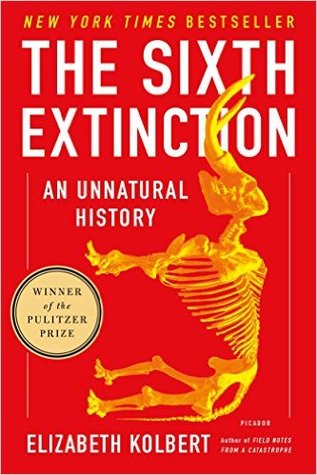More on this book
Community
Kindle Notes & Highlights
Everything (and everyone) alive today is descended from an organism that somehow survived the impact. But it does not follow from this that they (or we) are any better adapted. In times of extreme stress, the whole concept of fitness, at least in a Darwinian sense, loses its meaning: how could a creature be adapted, either well or ill, for conditions it has never before encountered in its entire evolutionary history?
One theory has it that the glaciation was produced by the early mosses that colonized the land and, in so doing, helped draw carbon dioxide out of the air. If this is the case, the first mass extinction of animals was caused by plants.
The end-Permian extinction also seems to have been triggered by a change in the climate.
the whole episode lasted no more than two hundred thousand years, and perhaps less than a hundred thousand. By the time it was over, something like ninety percent of all species on earth had been eliminated.
SINCE the start of the industrial revolution, humans have burned through enough fossil fuels—coal, oil, and natural gas—to add some 365 billion metric tons of carbon to the atmosphere. Deforestation has contributed another 180 billion tons. Each year, we throw up another nine billion tons or so, an amount that’s been increasing by as much as six percent annually.
No single mechanism explains all the mass extinctions in the record, and yet changes in ocean chemistry seem to be a pretty good predictor. Ocean acidification played a role in at least two of the Big Five extinctions (the end-Permian and the end-Triassic) and quite possibly it was a major factor in a third (the end-Cretaceous).
Depending on how tightly organisms are able to regulate their internal chemistry, acidification may affect such basic processes as metabolism, enzyme activity, and protein function. Because it will change the makeup of microbial communities, it will alter the availability of key nutrients, like iron and nitrogen. For similar reasons, it will change the amount of light that passes through the water, and for somewhat different reasons, it will alter the way sound propagates.
been estimated that calcification evolved at least two dozen separate times over the course of life’s history, and it’s quite possible that the number is higher than that.
To build their shells or exoskeletons or calcitic plates, calcifiers must join calcium ions (Ca2+) and carbonate ions (CO32−) to form calcium carbonate (CaCO
more acidified the water, the greater the energy that’s required to complete the necessary steps. At a certain point, the water becomes positively corrosive and solid calcium carbonate begins to dissolve.
Any mussel or barnacle or keel worm that can adapt to lower pH in a time frame of centuries presumably already would have done so.
“no past event perfectly parallels” what is happening right now, owing to “the unprecedented rapidity of CO2 release currently taking place.” It turns out there just aren’t many ways to inject billions of tons of carbon into the air very quickly. The best explanation anyone has come up with for the end-Permian extinction is a massive burst of vulcanism in what’s now Siberia. But even this spectacular event, which created the formation known as the Siberian Traps, probably released, on an annual basis, less carbon than our cars and factories and power plants.
Warming today is taking place at least ten times faster than it did at the end of the last glaciation, and at the end of all those glaciations that preceded it. To keep
up, organisms will have to migrate, or otherwise adapt, at least ten times more quickly.
he concluded that the contemporary extinction rate was “on the order of 10,000 times greater than the naturally occurring background rate.” This, he further observed, was “reducing biological diversity to its lowest level” since the end-Cretaceous extinction, an event, he noted, that while not the worst mass extinction in history, was “by far the most famous, because it ended the age of the dinosaurs, conferred hegemony on the mammals and ultimately, for better or worse, made possible the origin of our own species.”
She recalled having seen, on an earlier visit to the cave, a live bat trying to nuzzle a group of dead ones. “It just broke my heart,” she said.


